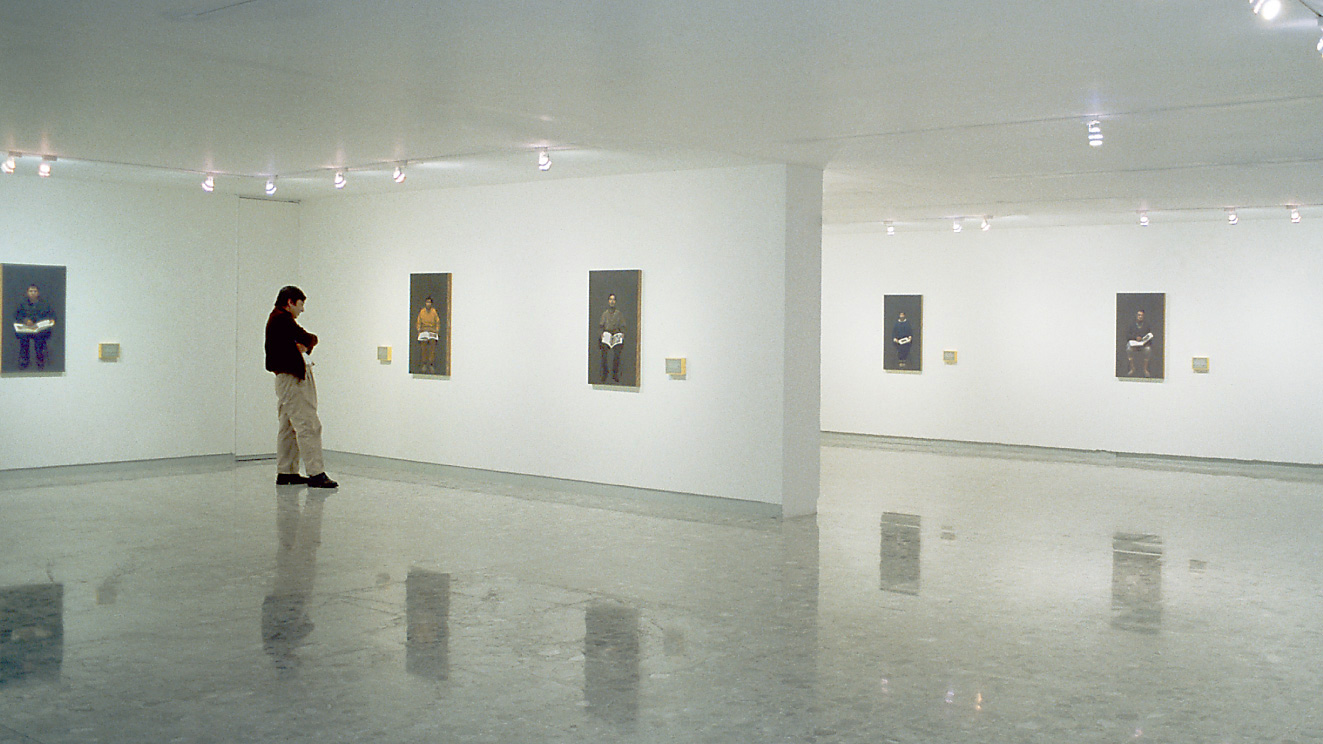en•treat•ment
1997 – 1999

To spend any time at all with Jusidman’s series of disproportionate diptychs is to be convinced that he has spent a lot more time doing just what you are: staring at the people in his pictures, in an honest attempt to discern just what they might be seeing. By locating himself alongside every other viewer, the painter transforms the hallowed, old-fashioned triumvirate of artist-painting-viewer (i. e., creator-creation-interpreter) into a less godlike and more flexible setup, in which meaning does not originate from a single high point and only gradually makes its way down to lowly viewers. In the more contemporary, less predictable, and increasingly risky arrangement staged by these works, each painting hovers inaccessibly above both artist and viewer, neither of whom is in any better position to know the truth of the matter. Art no longer stands in as an inadequate translation of idealized intentions. Instead, it is simply another part of the visible world, whose often confounding and sometimes strangely alien character is a matter to be confronted by anyone sufficiently curious about reality’s slippery nature, and knowledge’s imperfect grasp of it.
David Pagel, Out of the Picture, 1999
Looking, categorizing, and describing are discreet yet interdependent operations. While we may be used to sliding effortlessly from one to the other, their interrelationships become apparent in the painter’s practice, as well as in the interpretation of paintings—or at least of some of them. I would wish that viewers approach these diptychs via the relations woven between the minutely rendered and reserved presence of the portrayed patients, the clinical information that we have of them, and the paintings reproduced in the books they chose to sit with. My transcription of the patients’ photographs into paint separates us further from the sitters, but also arouses our interest in the outcome. The paintings reproduced in books are returned to their previous material state, in spite of the fact that they come to be at an even greater remove from their sources. The accompanying tablets bearing the patients’ clinical diagnoses are paintings—and while their materiality does not affect their textual content, it refashions our perception. All of these shifts echo each other and, I hope, lead to a complex network of possible readings, keeping the viewer engaged in an endless to-and-fro.
—Yishai Jusidman
src="../wp-content/uploads/yishai-jusidman-entreatment-1.jpg">
src="../wp-content/uploads/yishai-jusidman-entreatment-2.jpg">
src="../wp-content/uploads/yishai-jusidman-entreatment-3.jpg">
src="../wp-content/uploads/yishai-jusidman-entreatment-4.jpg">
src="../wp-content/uploads/yishai-jusidman-entreatment-5.jpg">
src="../wp-content/uploads/yishai-jusidman-entreatment-6.jpg">
src="../wp-content/uploads/yishai-jusidman-entreatment-7.jpg">
src="../wp-content/uploads/yishai-jusidman-entreatment-8.jpg">
src="../wp-content/uploads/yishai-jusidman-entreatment-9.jpg">
src="../wp-content/uploads/yishai-jusidman-entreatment-10.jpg">
src="../wp-content/uploads/yishai-jusidman-entreatment-11.jpg">
src="../wp-content/uploads/yishai-jusidman-entreatment-12.jpg">
